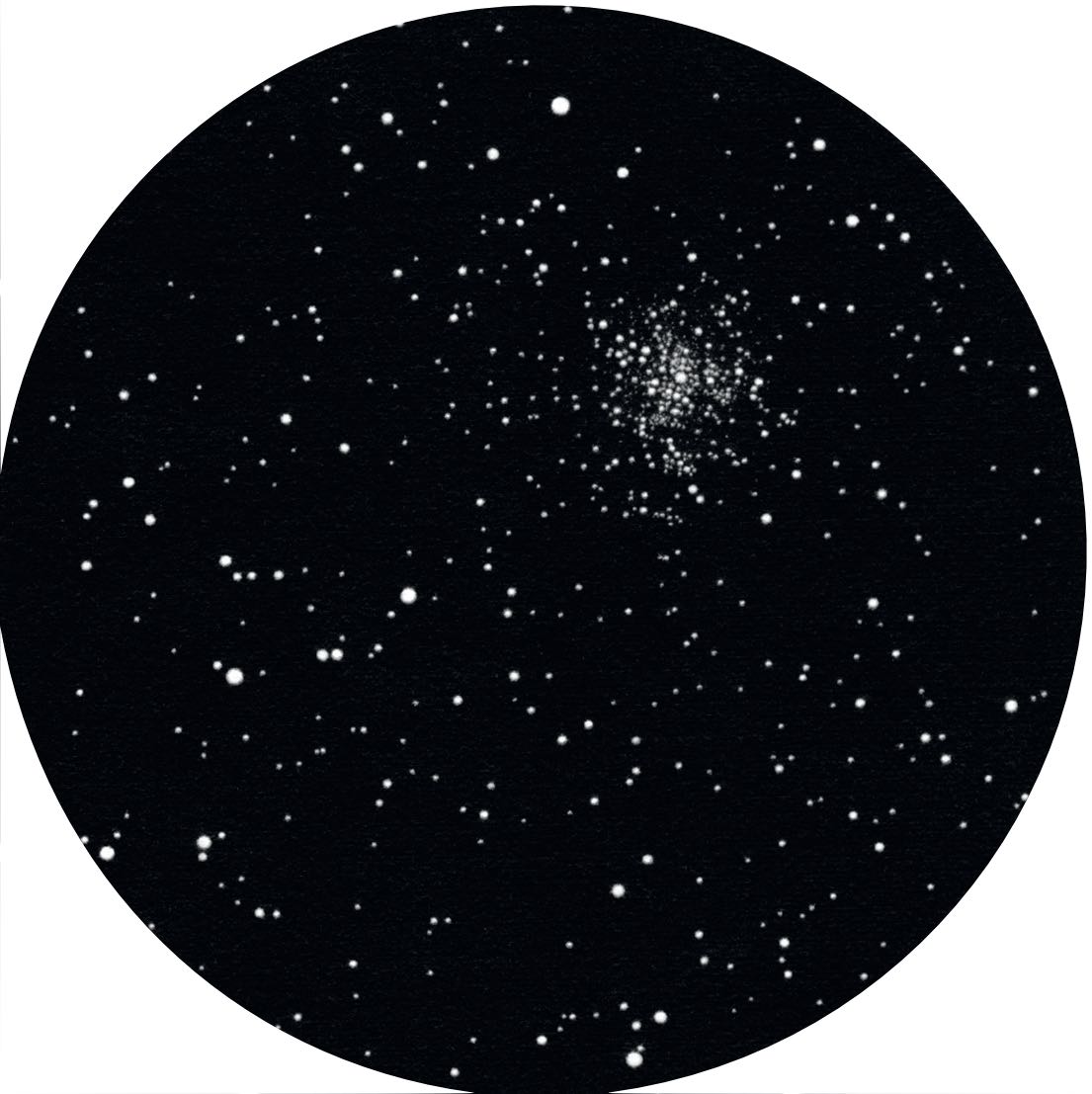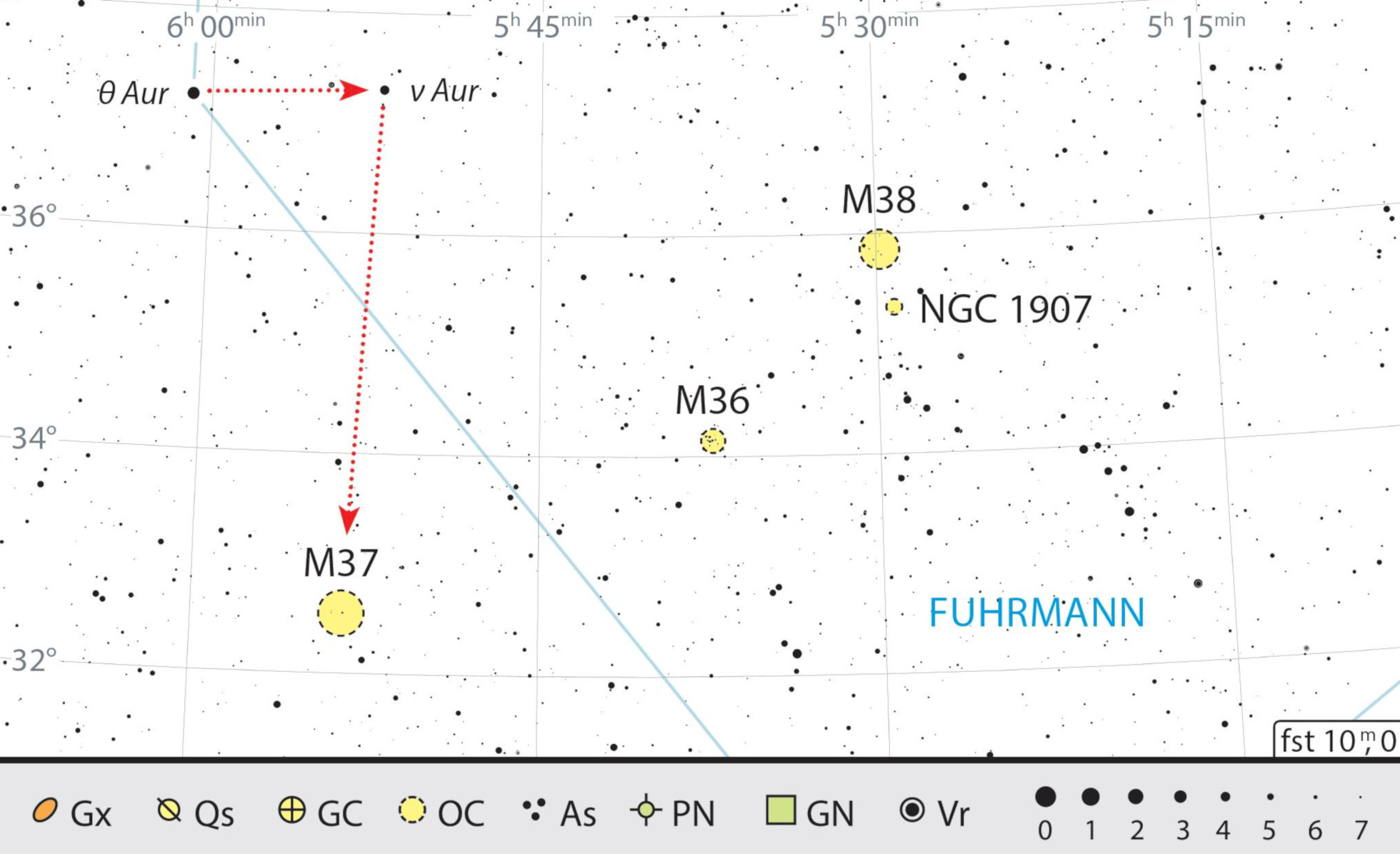M37 – a sheer abundance of stars
The southern Messier cluster in Auriga is not easy to find, but when you do, the sight will take your breath away.
 M37 at high magnification: you feel as if you are in the middle of a sea of stars. 2MASS
M37 at high magnification: you feel as if you are in the middle of a sea of stars. 2MASSClusters M36, M37 and M38 in the constellation of Auriga are a must for city astronomers on any winter observing tour. There’s very little difference in their physical data, but visually the clusters are fundamentally different.
The northerly-located M38, magnitude 6.4 and 25' across, offers a completely charming picture thanks to the cross-shaped form of its member stars. The middle cluster M36 with a brightness of magnitude 6 and an angular diameter of 12" has, on the other hand, few stars, but captivates due to the extraordinary brightness of each individual sun. However, the southerly-located M37, magnitude 5.6 bright and 25' wide, is without a doubt one of this author's favourite objects: hardly any cluster accessible to city astronomers has such an abundance of stars. The sight of M37 makes even experienced observers catch their breath.
Glistening gold dust
 Drawing of M 37. North is at the top. Peter Kiss
Drawing of M 37. North is at the top. Peter KissCharles Messier, who first observed this 37th item in his catalogue in September 1764, saw it quite differently. He noted rather briefly: "cluster of faint stars." Later observers, however, were rather more fulsome in their praise: "glistening gold dust" (Smith), "wonderful" (d ́Arrest), "magnificent sight" (Brenner). Nowadays, every city astronomer can experience this extraordinary sight for themselves, even with relatively simple equipment.
Finding the cluster is not easy without GoTo technology. It is best to start at θ Aur, then pan around 2° west to ν Aur, from here pan at a right angle around 4° to the south, where you will see a triangle of magnitude 6 stars, which spans a good 2°. If you scan the inner area of the triangle with a low magnification and, if necessary, using the averted vision technique, M37 should eventually be recognisable as a faint nebulous speck.
Sea of stars in an 8-inch telescope
This author observed the cluster with various apertures: the 60-mm and 80-mm refractors produced the best results at 60×. Here, the central area of the field of view was filled with 15 to 20 uniformly bright needle-points, which were distributed around a central brighter star. With the 120-mm refractor, 125× magnification proved to be ideal. My observation note: "Fills the eyepiece. Faint, closely-spaced stars of varying brightness, 20 to 30, with a binary star pair in the centre". The highlight of the night came with the 8-inch: with 250×, the observer could believe he was standing in the middle of a sea of stars, overwhelmed by sparkling diamonds. The fact that this is possible in a light-polluted urban environment is the fascinating thing about M37 – one of the most attractive objects accessible to city observers in the winter night sky.
 Finding chart for M37. J. Scholten
Finding chart for M37. J. ScholtenAuthor: Karl-Peter Julius / Licence: Oculum-Verlag GmbH
